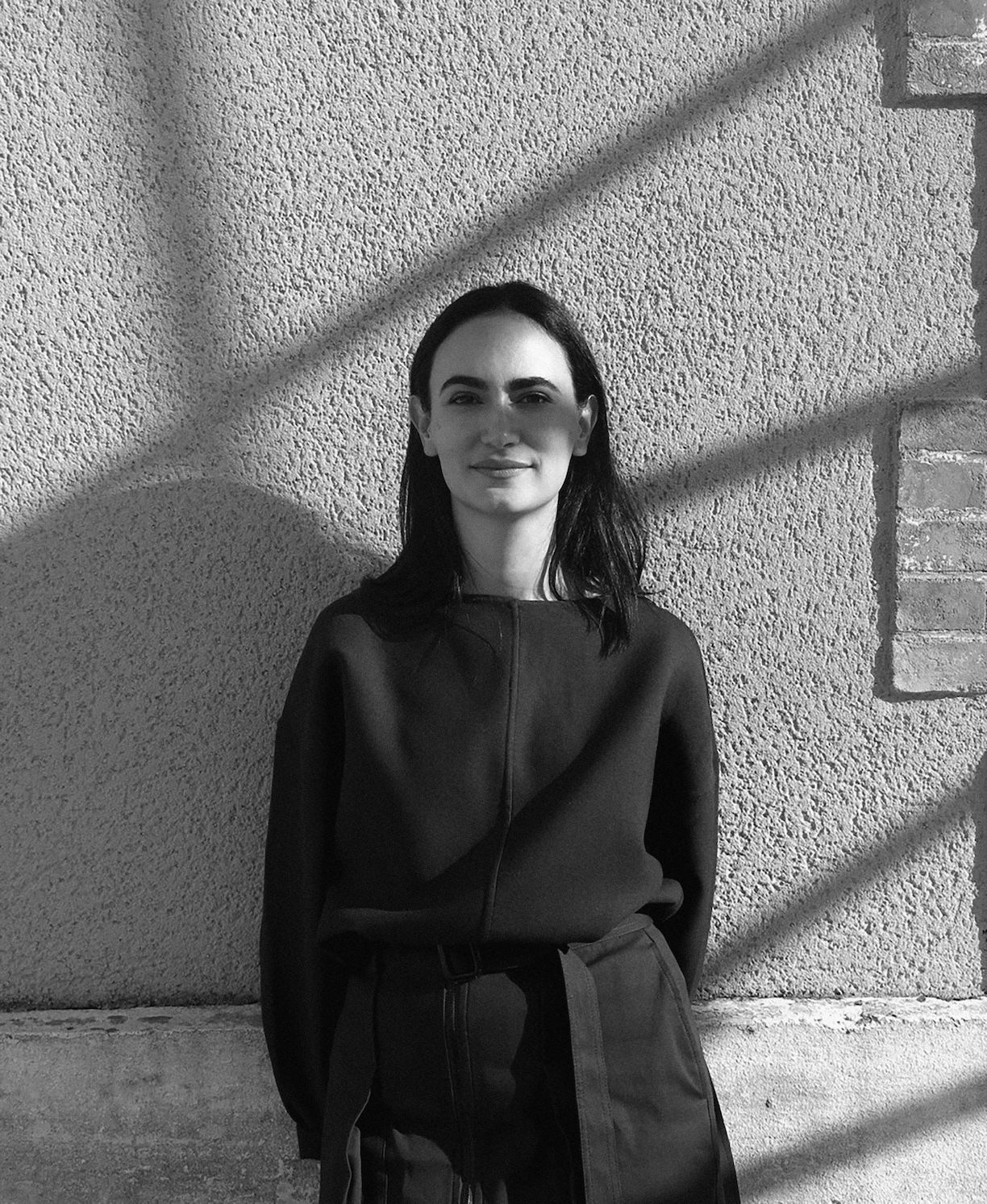Media Habitat c. 1975
|Victoria Camblin
For the first Sharjah Architecture Triennial, Farzin Lotfi-Jam, Felicity Scott, and Mark Wasiuta mobilize the archive of a United Nations conference on human settlement. Expressed through documentary films meant to represent each member state, the 1970s view of global development provides a warning for the present.
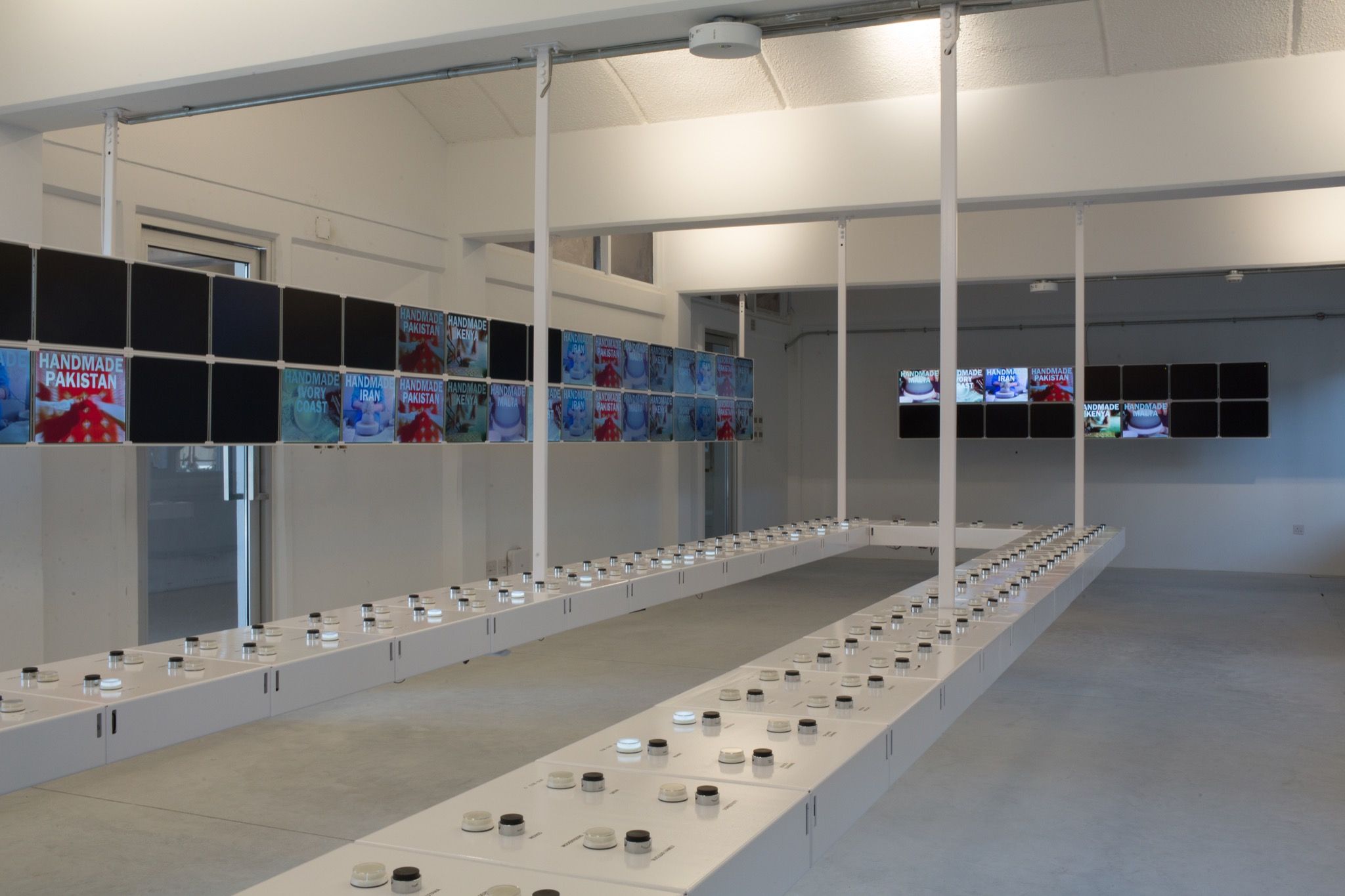
Curated by Adrian Lahoud, dean of architecture at the Royal College of Art, and titled “The Rights of Future Generations,” the inaugural Sharjah Architecture Triennial launched with three days of panel discussions, performances, screenings, and other programs in November 2019. I attended the opening events with my colleague Nicholas Korody, both of us still reeling from the completion of 032c Issue #37. The magazine’s “Black Hole Catalog” dossier, like Lahoud’s triennial and its 35 project commissions, had called among other things for a contemplation of “future generations” – in our case, how environmental change might affect them psychologically, and how they might adapt to the spaces they inherit. We felt primed for the proceedings in Sharjah, where climate catastrophe figured prominently as both a threat to the future and ghost from the past, intersecting and overlapping with colonialist forms of violence and control.
An outgrowth of the Sharjah Urban Planning Council founded by the late Khalid bin Sultan Al Qasimi in 2014, the triennial positions itself as the “first major platform for architecture and urbanism in the Middle East, North and East Africa, and South and Southeast Asia,” anchored in the specificities of the changing built environment of the UAE. Sharjah is unique in the region, a locus of cultural preservation, production, and discourse in a country known for futuristic skylines and steroidal new development. In contrast to the “tear down, rebuild” maximalism of its neighbor Dubai, Sharjah’s active conservation efforts have led to the retention of a number of buildings from the 1970s and 1980s – “old” (in local terms) products of the infrastructural investment that followed the emirate’s independence in 1971.
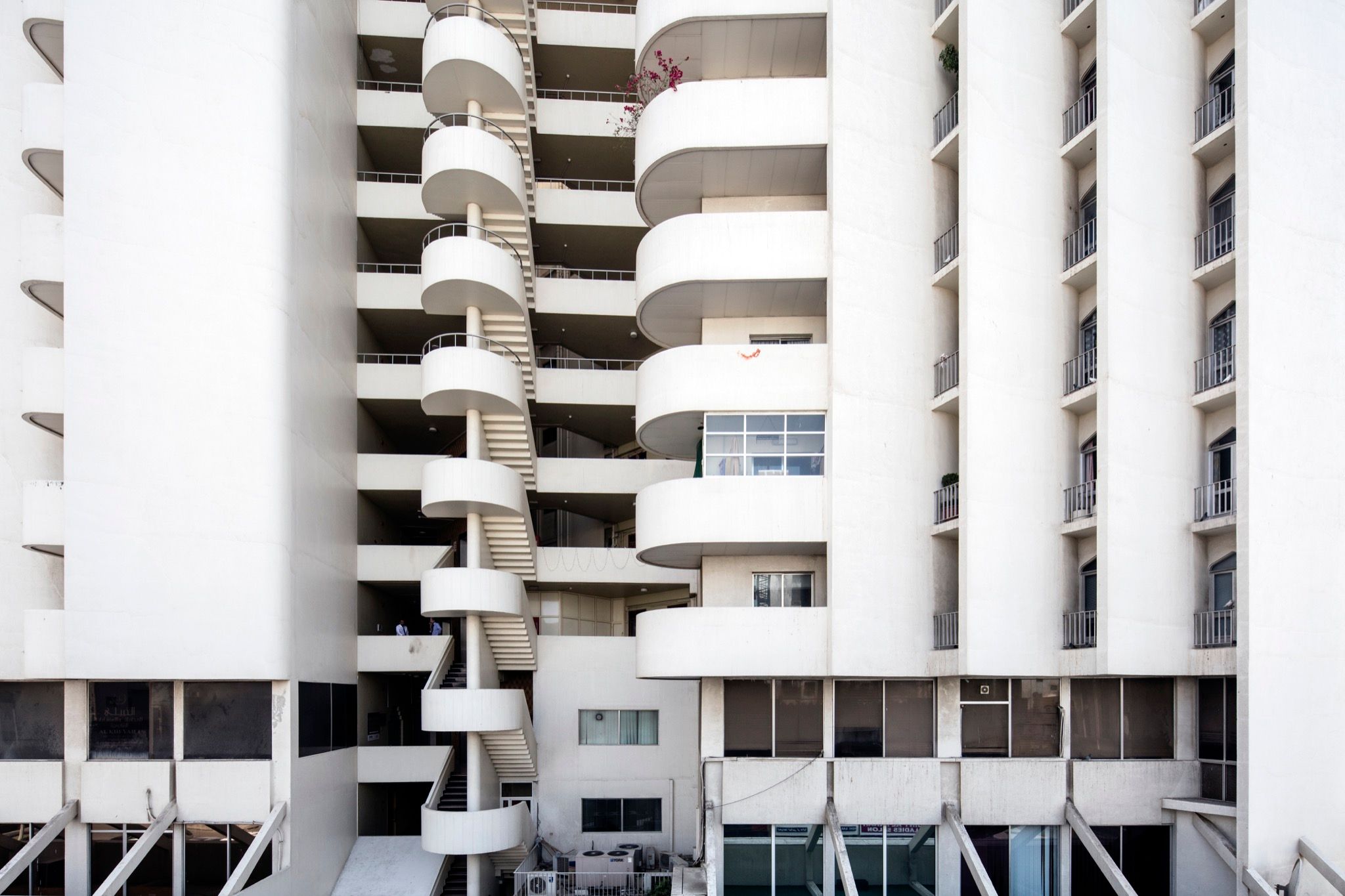
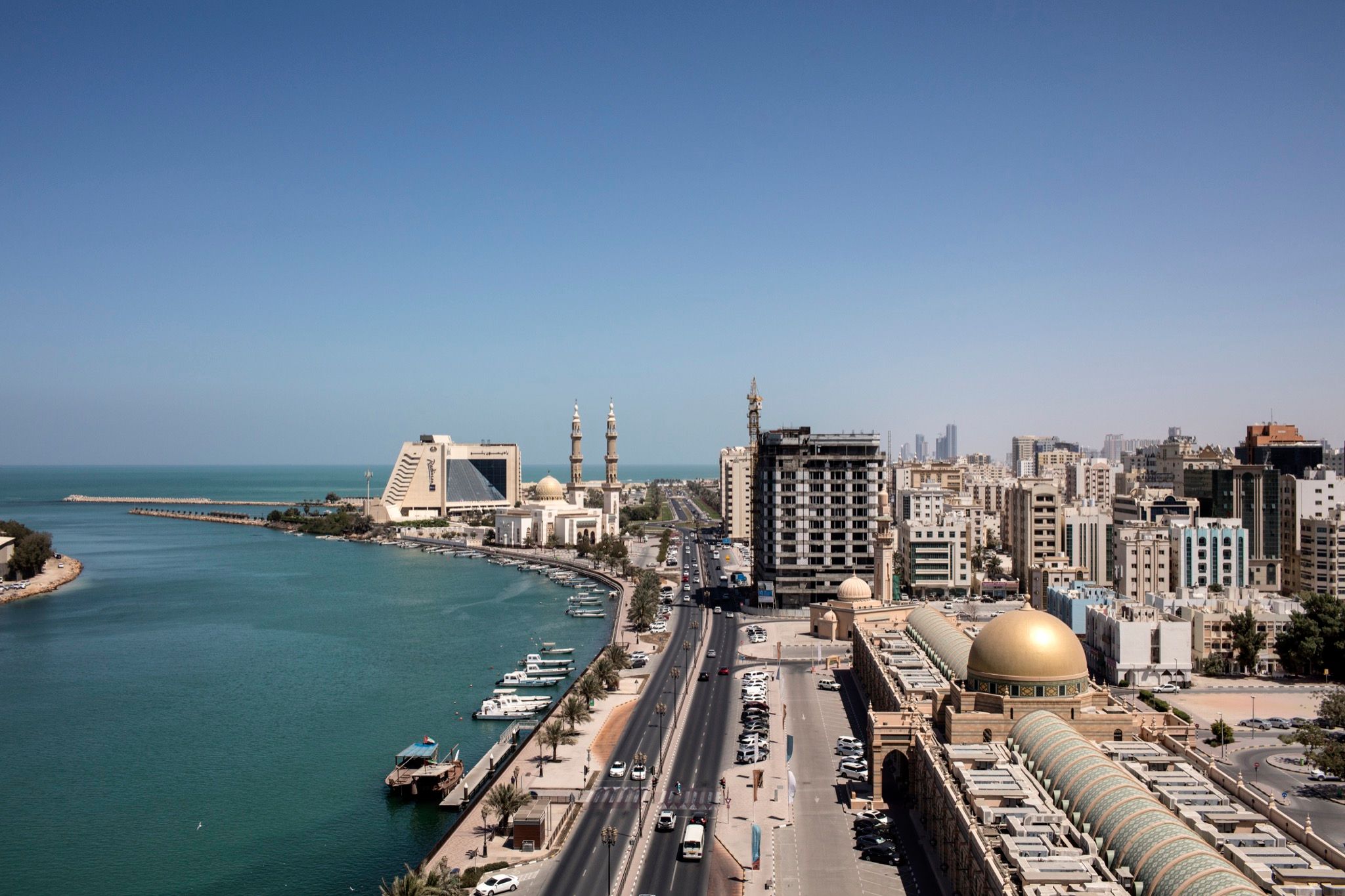
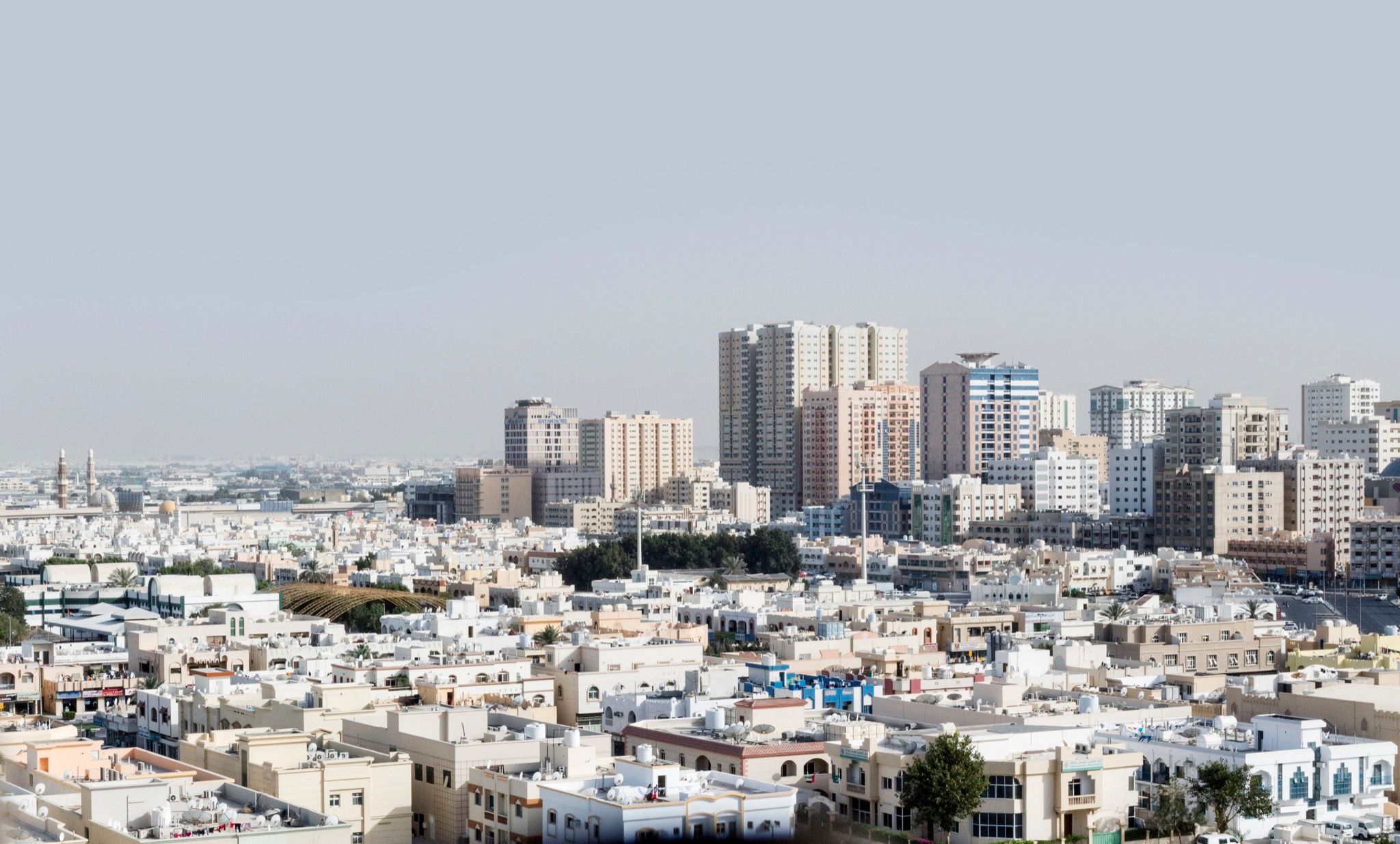
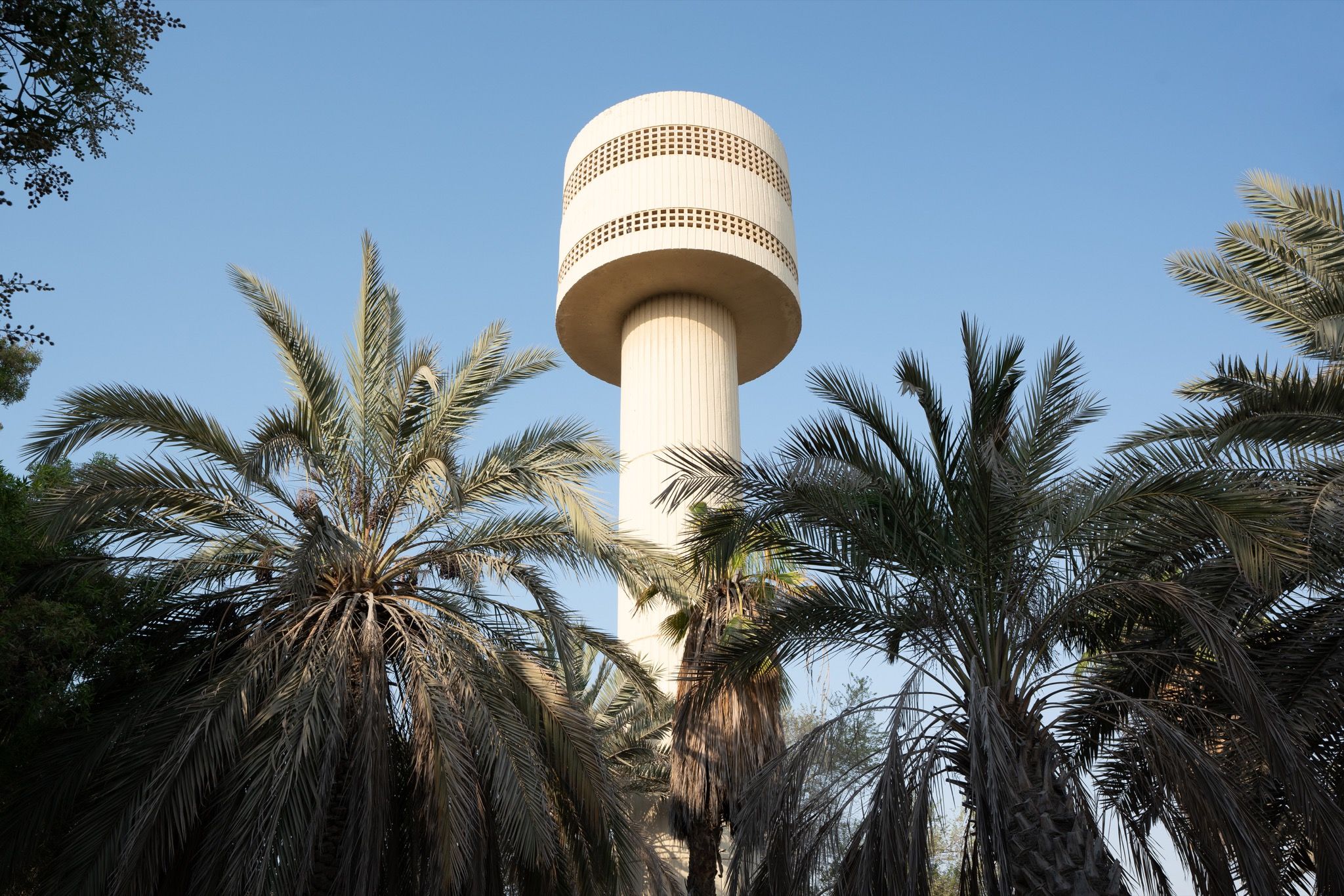
Two such structures serve as primary venues for “The Rights of Future Generations”: the old Al Jubail Fruit and Vegetable Market and the Al-Qasimiyah School. Case studies in the role of exhibition and arts foundations in strategies of adaptive reuse, the two decommissioned facilities housed most of the triennial’s commissions and programs, and served as bookends for interventions taking place in the urban environment between them, where processions, musical performance, and panels led exhibition visitors onto the streets of Sharjah, and passersby onto the triennale’s platforms.
Orange, vaulted, and built for air flow, Al-Qasimiyah is exemplary of the many schools built by the UAE in the 1970s, and the installations, talks, and performances sited there seemed to absorb the atmosphere, if not the architecture, of childhood education – chalkboards and all. Occupying a vestibule in the central courtyard is Media Habitat, c. 1975, an impressive project by Farzin Lotfi-Jam, Felicity Scott, and Mark Wasiuta that mines the audio-visual archive of the United Nations’ first Habitat Conference on Human Settlements. Held in Vancouver in 1976, Habitat invited UN member states to “speak for themselves” by producing documentary films of recent urban and rural development projects, offering assistance to countries demonstrating a need for resources such as film equipment and technical training. The resulting 236 films were shown during the conference as a supplement to delegate speeches and national reports – a “global learning experience,” in the UN’s language – and allowed the countries of what we now call the “Global South” to visually narrate their position (and, often, their needs) within the emergent global economic order. Media Habitat c. 1975 reorganizes these materials not only by countries’ positions on the Historical Index of Human Development at the time, but by the thematic tropes leveraged in their documentaries. This strategy of disassembly repurposes the footage into a sort of counter-evidence against the ideology — and teleology — of nationalist modernization they were meant to serve. Highlighting a shared filmic language, the installation suggests that the Habitat project was as much about refashioning as representing, and that access to the new global economic order, particularly international aid, was contingent upon learning and adopting its visual language. Settlement is figured as both measure and means within this paradigm: an index of (under)development and a technology for progress. Somewhere between matryoshka and mob, Habitat was not just a showcase of settlement but a promise of shelter, demanding a degree of conformity as the cost of admission. In turn, the resulting multi-channel video installation is, itself, a habitat of sorts: a self-contained control center in which viewers choose their own adventure by pressing buttons labelled with state names and themes.
The five of us share a connection to Columbia University – I attended as an undergrad, but Nicholas and Farzin studied at the Graduate School of Architecture, Planning, and Preservation, where Mark and Felicity co-direct the Critical, Curatorial, and Conceptual Practices program and Farzin now teaches. It felt appropriate, then, when we gathered in a former classroom at Al-Qasimiyah for the following conversation – although unlike the UN, Media Habitat’s creators do not seek to offer a “learning experience.”
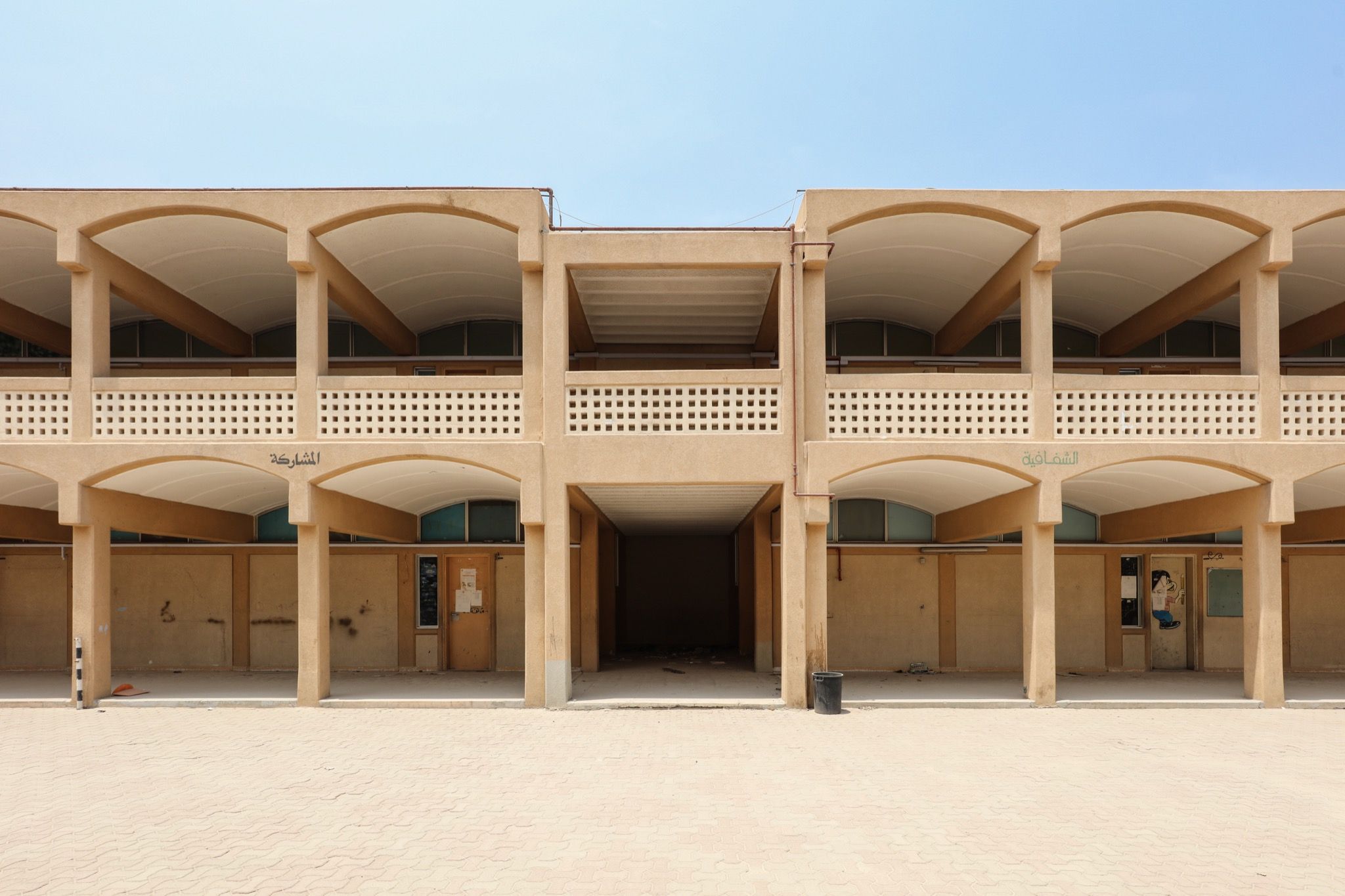
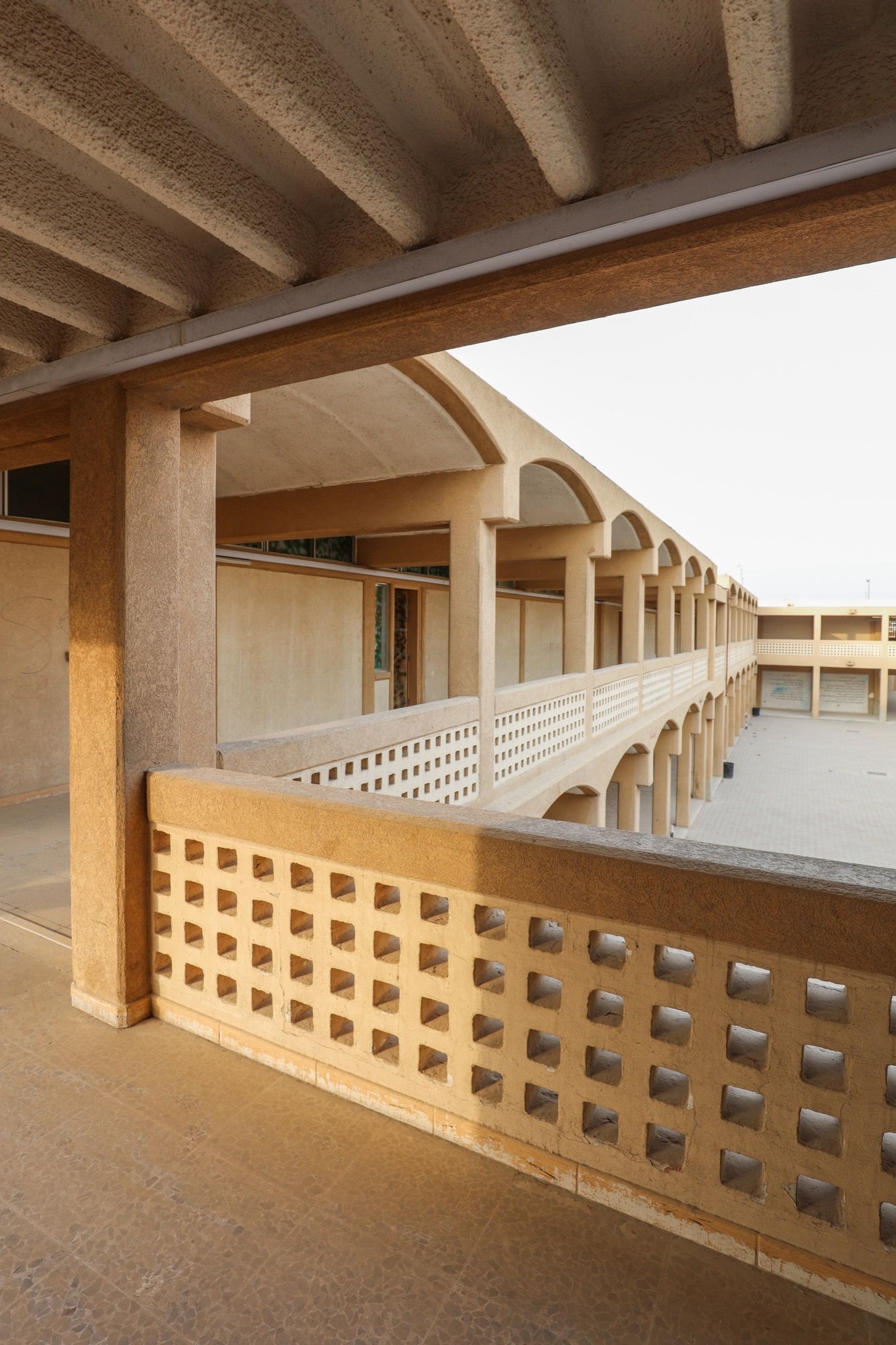
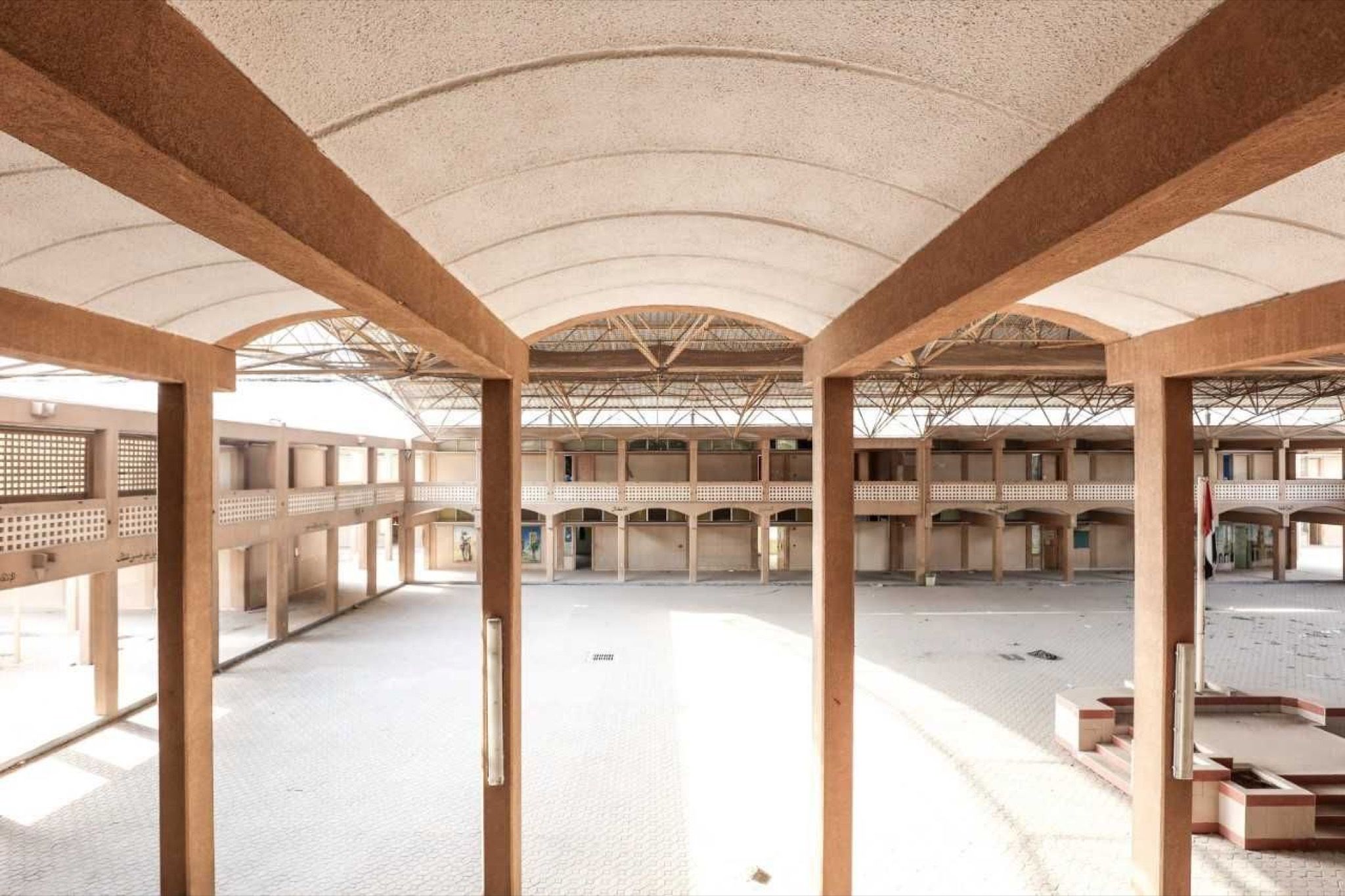
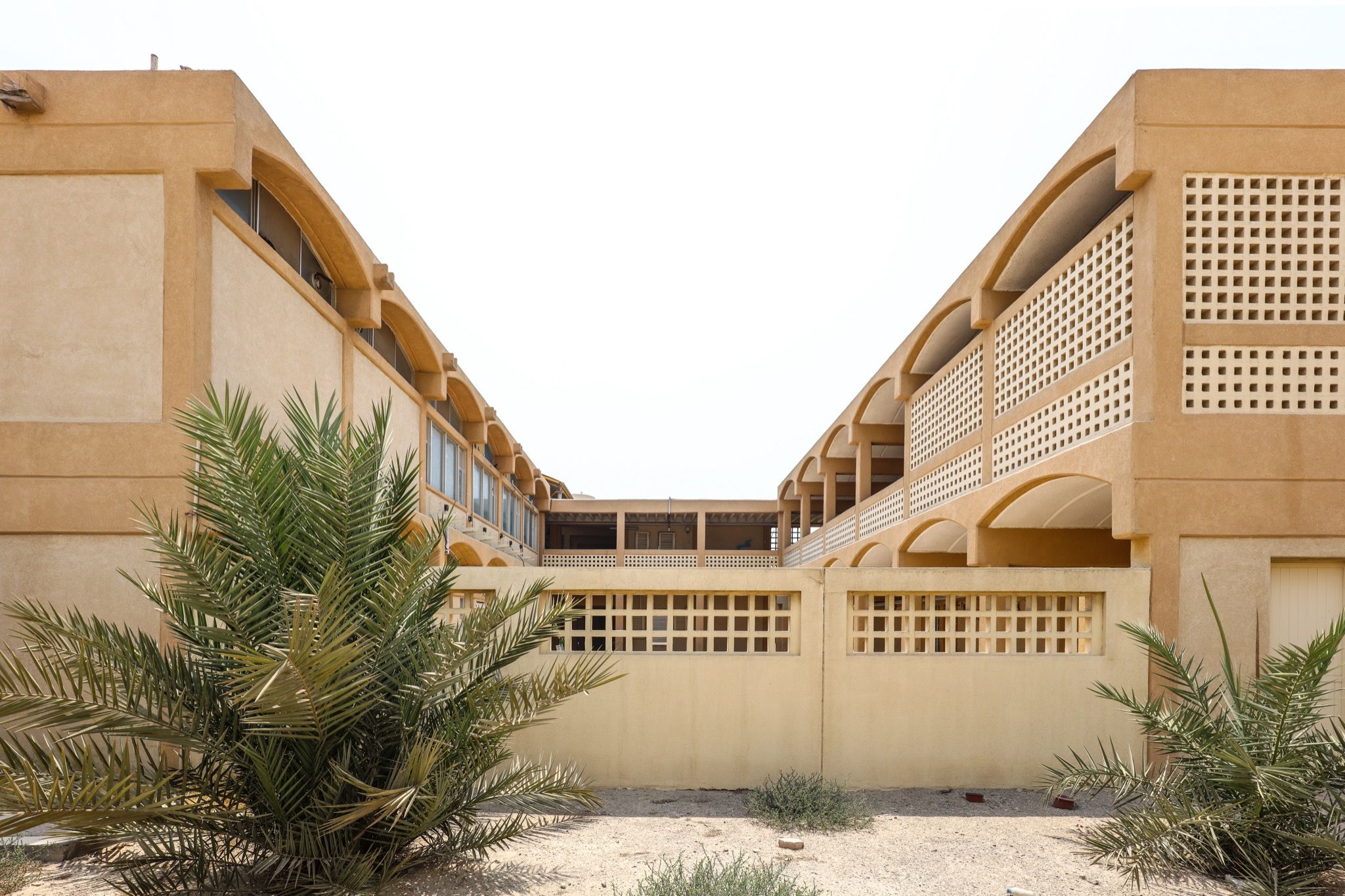
Nicholas Korody: Would you situate the Habitat conference within a broader history of geopolitical exhibitions? I’m thinking specifically of 19th century World Fairs, which often featured representations of foreign, typically colonized territories, reframed and restaged for consumption by European audiences. There’s a long history of territorial representation going hand-in-hand with territorial transformation.
Felicity Scott: When they first decided to have the Habitat exhibitions, they decided to do it in the model of the “expo” — Expo 67, for example — particularly through their use of media. One can trace that type of exhibition back to the history of World Fairs, which carries a colonial legacy of course. When you think back to those exhibitions, they were, in effect, mechanisms for justifying colonial rule: they began with presentations of colonial holdings from the British and French Empires. Was the United Nations also collecting holdings to incorporate under its rubric? I do think that is part of the ambition of the UN Habitat Expo. But your question is asking something different as well, around the presentation of territory.
Mark Wasiuta: Settlement has to happen somewhere. The term that comes up in the Habitat literature isn’t “territory,” though, but “land.” It becomes very problematic. How to make land productive? An old problem, but one that figures prominently in the mission statement.
NK: You mentioned in your presentation that “settlement,” in the UN’s usage, has two meanings: as simply a description of how people live, and also as a primary mechanism of development. It is both “what is,” and “how to change it.”
MW: This is what the Habitat conference is about: to try to come to terms with settlement as a concept, but also as a tool of transformation. There are many definitions of the term that you come across in the literature; the ones that help us understand the films most clearly say “a representation of reality” — but specifically, of “social and economic life.” So there’s already a linkage, where settlement is what ties together social and economic life. In our work on the material, we have clips with labels such as “the nuclear family” or “domesticity,” in which we see a certain self-fashioning that seems to fit within that logic. The nuclear family becomes the mechanism of social reproduction that allows for productive territories.
FS: As distinct from the extended family sitting outside their traditional dwelling, you see modern houses with families sitting around watching television.
MW: Exactly. Settlement is figured as both instrument and object of development. It’s almost surprising to see it so clearly stated.
Victoria Camblin: Today, when we use the term “settlement,” it seems exclusively in reference to instances of displacement — specifically, to the Israeli occupation of Palestine.
FS: Actually, the chief delegate of the Palestinian group inverted the title of the Habitat exhibition by pointing out that it was about inhuman unsettlement. There are also funny moments where, for instance, the delegate from the US said that we don’t think of our cities as human settlements. It’s already an ideology of the undeveloped. Settlement is distinct from a city — the language is different. The dissimulation of a world system in which all people live operates through this strange rhetorical strategy.
MW: I wonder the degree to which the term “settlement” serves some kind of conceptual or administrative requirement of the UN – meaning it has to be general enough to be inclusive. In a sense, that’s how the films work too. Nevertheless, clearly “settlement” is a curious term. It doesn’t cohere into a city yet, and so it’s somehow not a form of organization we understand.
VC: So it feels indelibly colonial. In the language of the US, the “settlers” are seen as the first to arrive – even if there are already people there. The term itself brings newness with it.
MW: At the same time, within the UN logic, a city is a settlement: it’s an organizer of social and economic life. It’s also many other things, but it’s what allows us to see architecture and space implicated in a rationality of advancement. Settlement is a term that allows them to be general enough to represent tropes of anthropological community, to suggest that somehow as humans we are tied together, and settlement is how we understand that.
VC: The terminology in the description of the project contained what I perceived as a kind of productive anachronism. “Settlement” already seems like that, but I also noticed you reference the “Global South,” which I believe was not in use at the time of the conference. It would have been “Third World” still back then, which was later replaced by “Developing Countries.” It echoes this teleology of development as something we are all heading toward together. Newer terms like “Global South” neutralize that.
FS: I think it’s important to distinguish the Habitat project from the countries themselves. On one hand, the Group of 77 is very active at the time, and actually shut down the final declaration and protocols they were trying to implement through acting as a voting bloc. Tricontinentalism was very much alive and well at the conference. On the other hand, many political actors within these “Third World” contexts were not necessarily the same agents as those who took the money from the UN in order to make films that performed the UN’s ideology. You can’t map them on to each other in a simple way. For example, Cuba produced a film but, at the conference, the country was deploying very distinct political strategies.
VC: This gets into a conversation around nation-branding — they’re like the commercials that come on when you watch CNN World News in your hotel room, where everyone is dancing on a hillside in traditional Balkan garb and then a rhyming jingle about Montenegro starts playing.
MW: That’s one of the fascinating things I tried to allude to as well — the degree to which regional traditions appear in the films. It’s hard to know if they are signifiers of loss or obsolescence, or something that resists being made productive. Or if the UN ideology at this moment is about trying to make these traditions productive, which is something else entirely.
FS: Renewing craft for tourism, for instance.
MW: Exactly. It’s not just a denunciation, it’s something else. We were very interested in how there was a self-fashioning of poverty in these films as well. Within the spectrum of problems to solutions, some nations chose to focus more on problems — starving children, indications of misery. I don’t know if this is a critical act or whether it’s being fully interpolated into the spectrum of development.
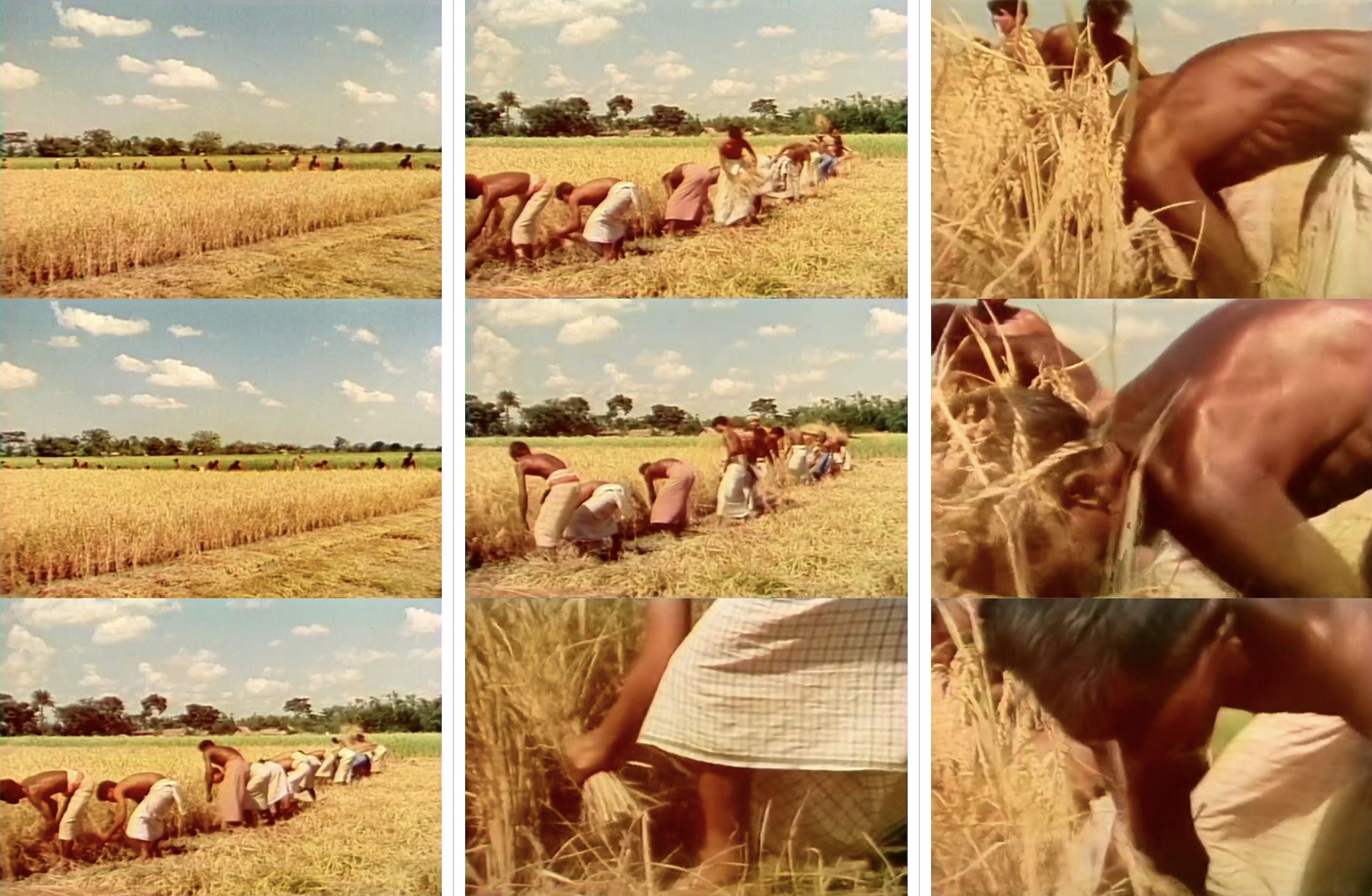
VC: Typically, it’s the “First World” gaze that does that.
FS: Asian countries refused to show problems, while others would show a problem because it would potentially produce extraction of World Bank Funding. There was strategy. They’re not unknowing types of self-presentation, even if they perform the clichés of the UN’s imagination.
NK: Going off that, it would seem as if localism, or the displaying of locality, is the condition of possibility for translation for an international body such as the UN. It’s a generic that is founded on difference. Everyone has a local craft, a regional dress. That feels to be the ground of the development paradigm of the UN Habitat conference as well as the neoliberal forms of governance that this discourse later morphs into. I’m wondering, to be self-reflexive, if that’s also still going on here, at a place like this triennial.
MW: I think that’s an important question: the degree to which certain tropes of locality, certain kinds of customs, are self-fashioned to fit within a logic of rights.
FS: We’re very self-conscious of the fact that these were a series of films produced for an international audience, and that we’re also producing an apparatus for a similar audience, albeit without performing it the same way.
MW: Our project is a warning to not return to rehearsing those relationships and those forms of vision that were so clearly legible in the UN films. How to encounter a territory that is different than the one that most triennials encounter – without lapsing into those types of paternalistic observations that are reproduced in those UN films. I think this triennial, more broadly, is trying consciously not to do that.
NK: So that’s how you’d position the project rhetorically? As a warning?
FS: Yes.
NK: How does the experience of the installation, affective or conceptual, enforce that? Who is the visitor? What is the mode of address that you’re performing? What is meant to happen when you push the button?
Farzin Lotfi-Jam: Some of the visitors today were asking me if we had the data on who is pressing what, which we don’t. But it seems like visitors press the buttons corresponding to their own countries, which does something as well. At some level you’re aware that the project is putting a constructed notion of that country out there, but because you still have that affinity, somehow that button is more yours than someone else’s. Something about that tension is involved in the experience. For us, over-identifying with the bureaucracy of the UN and reproducing that logic, and making it visible in some way, is part of the project.
FS: It was interesting: a group of Emirati students came, and they were pressing buttons and asking someone who was helping us questions. And after they left, I asked her what they were saying and she said things like, “I see myself in it.” It never struck us that people might interpolate themselves into 1970s photos.
FLJ: Our steel fabricators were from India and after it was set up, they were watching videos from the Indian project and remarking on things and places they recognized. I think the country thing is connecting for people – and when you press a trope or a country, all related buttons flash, inviting you to press those, too.
MW: The country thing is tricky because you wouldn’t want people to treat the installation as yet another form of national identification. That would be the absolute opposite of the intention. What you want instead is to see the country not as a familiar image but as an alienated one, produced not by a narrative but by indicators of tropes that might be uncomfortable. To see your country as a space of heroic extraction or demolition, for example. We want it to work in a way that troubles easy identification.
VC: Whereas one goal of the original commissions is to find these core commonalities within a huge diversity of places and people. It seems that’s what visitors are looking for: a recognizable thread.
MW: Those films may have cohered into a 70s version of that, but our project hopes to emphatically not do that, or at least to reveal how that 70s version is constructed. Also, the project isn’t intended to be understood merely as dour, or as something that sits only within an apparatus of refusal. In some ways that’s too easy. What makes it interesting is that the shots are visually compelling — there’s something about the hues of 70s films, for example — and so the project is also trying to contend with that. What is it about the shot? And how is it, within the both sappy and instrumentalizing logic of the “family of man,” that there’s still something incredibly compelling about these images?
FS: It has to resolve into an anti-“family of man.”
MW: I think classification is clearly the key. How one is classified within a world order is part of what drove the UN project and how one aspires to move along the hierarchy of development. We decided not to reproduce the narrative of the films and to break them down – not only into tropes, which is where we started, in the recurrence of certain types of images, but also into shots. Everything we’ve described within the films and the 76 Habitat Conference — the confluence of territory and population, the production of an aspirational modernization — use systems of dissemination organized around the filming of the shot. There’s something about that as a structural block within the construction of global human settlement that becomes incredibly interesting to us. The device is how to organize those shots to make them legible.
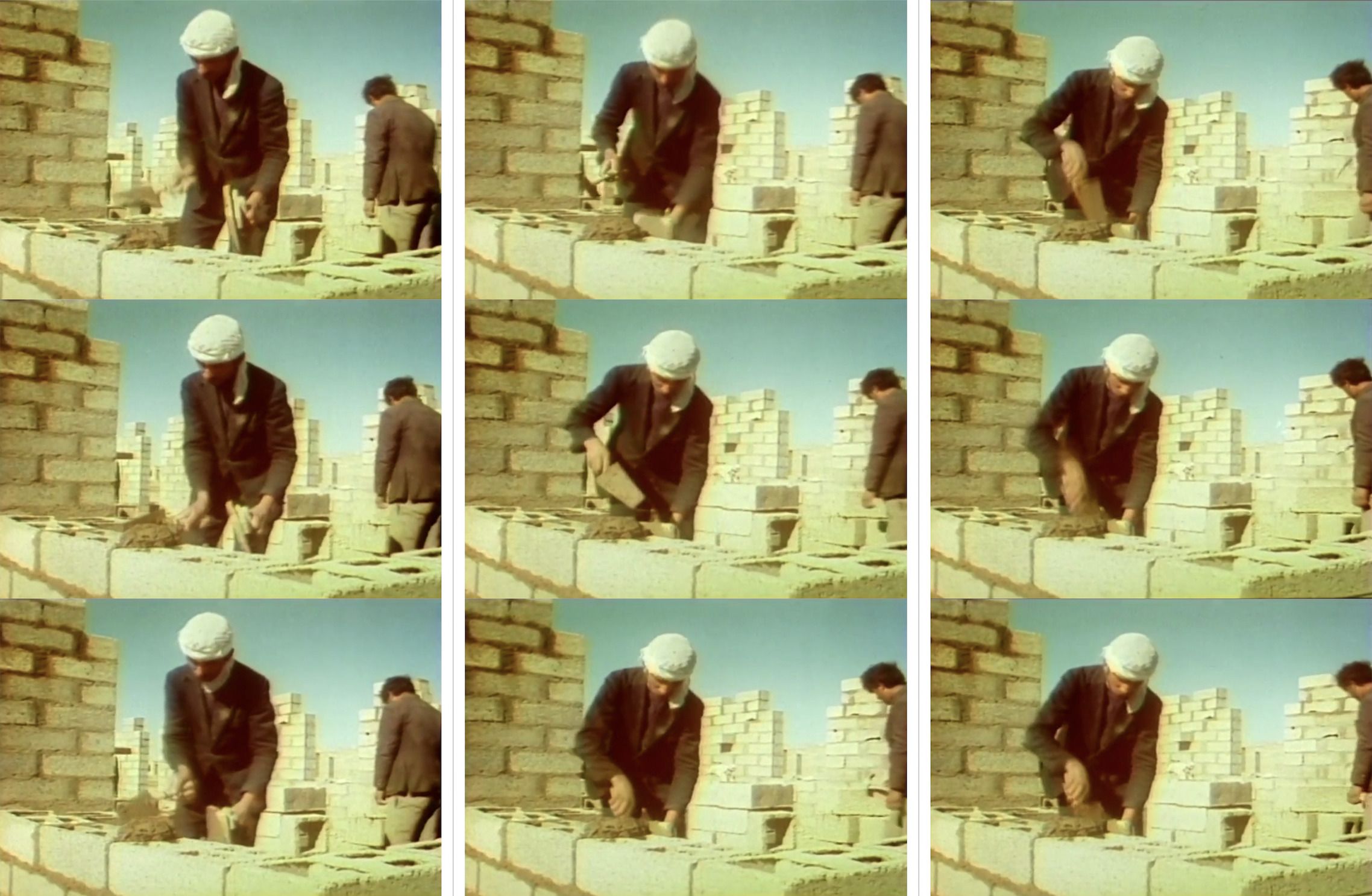
NK: The shared filmic language shows that the goal of the project was already underway, in a certain sense. If they’re able to speak in a shared vocabulary, then the project of modernization is already happening, right?
FS: Actually, most of the filmmakers were not filmmakers by trade, but were trained, in workshops, by the UN and the National Film Board of Canada to use this supposedly documentary mode to produce the films.
MW: Some of the countries had very established cinema. So, the shot becomes incredibly interesting not just as the structural block of these tropes but also as a type of expertise — let’s say a meta-mediatic expertise – that organizes all of the films in the archive. As you go up the index of development, you rise in the scale of cinematic competence. The countries that have established cinema don’t need that training, and so the workshop becomes a transmission of knowledge. A different version of our exhibit could be about those workshops, because the training manuals are fascinating.
NK: How does this connect to the issues of futurity, rights, and survival grounding the Sharjah Triennial itself, with its weighty title, “The Rights of Future Generations”?
FS: The language of rights as we know it is very problematic, particularly within the context of the UN. There is a narrative about the right of countries to speak for themselves, so this is already imminent to the logic of the invitation. But in terms of the “future generations” scripting of the Sharjah Triennial, what we’re looking at is a system of filmmaking that is supposed to short circuit that possibility. The UN film project is already trying to script a future, to narrate it, rather than to allow a country to claim a right to a different future. So our project is a cautionary tale in that regard as well: it’s about how rights might be foreclosed by a body meant to ensure them.
MW: Many of the films are very emphatic about who the holders of those rights will be: children. An obvious choice, but nonetheless it’s fascinating to see the degree to which children appear as the future. Children playing, children in misery, children learning. The easiest and simplest — in some ways, stupidest — figuration of that future is incredibly prevalent in these films.
FS: And categories such as “the expert” and “the teacher” serve as the instruments that modernize these children. The idea that children have a particular sort of rights has already been scripted by their education.
MW: You see all sorts of figures and emblems of transmission of these films – signals sent from the UN headquarters to children in Algeria. That’s one way to trace these paths. “Experts” seem incredibly important to this conversation. So part of the question was, “what are the tools of expertise?” Sometimes they are maps and graphs, so forms of abstraction. Sometimes they are chalkboards, which are pedagogical devices. Sometimes they’re survey instruments. Often these devices are meant to operate on a population, and often on land or territory.
VC: This notion of expertise is imbued within the context of biennials and triennials in general – which is particularly felt during opening weekend, when the curator, critics, and panelists are all on site. It brings up all sorts of thorny issues, particularly within a context such as Sharjah, which becomes temporarily filled with all sorts of international “experts.”
NK: To paraphrase Ivan Illich, the figure of the expert can prove disabling. It effectively serves to make the “teached” feel stupid.
VC: A dynamic that you find as a visitor here, too – particularly in this venue, where your project is exhibited in an old school building. Generally speaking, biennials and triennials often involve a pedagogical function, or that’s always in question, it seems. There is an element of educating an international audience about what’s taking place in discourse and practice “elsewhere.”
FS: A provocation or encounter, perhaps, more than an education.
VC: In your installation, for example, I’m thinking about the buttons and the injunction to participate. It reminds me a bit of a science museum, where the knowledge is imparted through participation – a progressive place of learning where the viewer or the “student” is given some form of agency in their discovery of truths about the world. I am wondering if we can situate that participatory aspect of your installation within the implied pedagogical mission of an exhibition such as this.
FLJ: It’s tricky because you could say that exhibitions are, by convention, pedagogical. Or you could say that it’s an experience. For us, I think, the environmental experience is more important. The encounter we’re attempting to make is one where your environment becomes a ricochet of these tropes. Sight walls, duplication, repetition — this is key.
FS: We’re uncomfortable with the idea that we’re trying to really educate anyone. If there is a pedagogical function, it’s in the register of what an exhibition might look like and how it might function – not the content developed by the UN.
FLJ: “This is not a classroom!”
NK: But it is a “warning.”
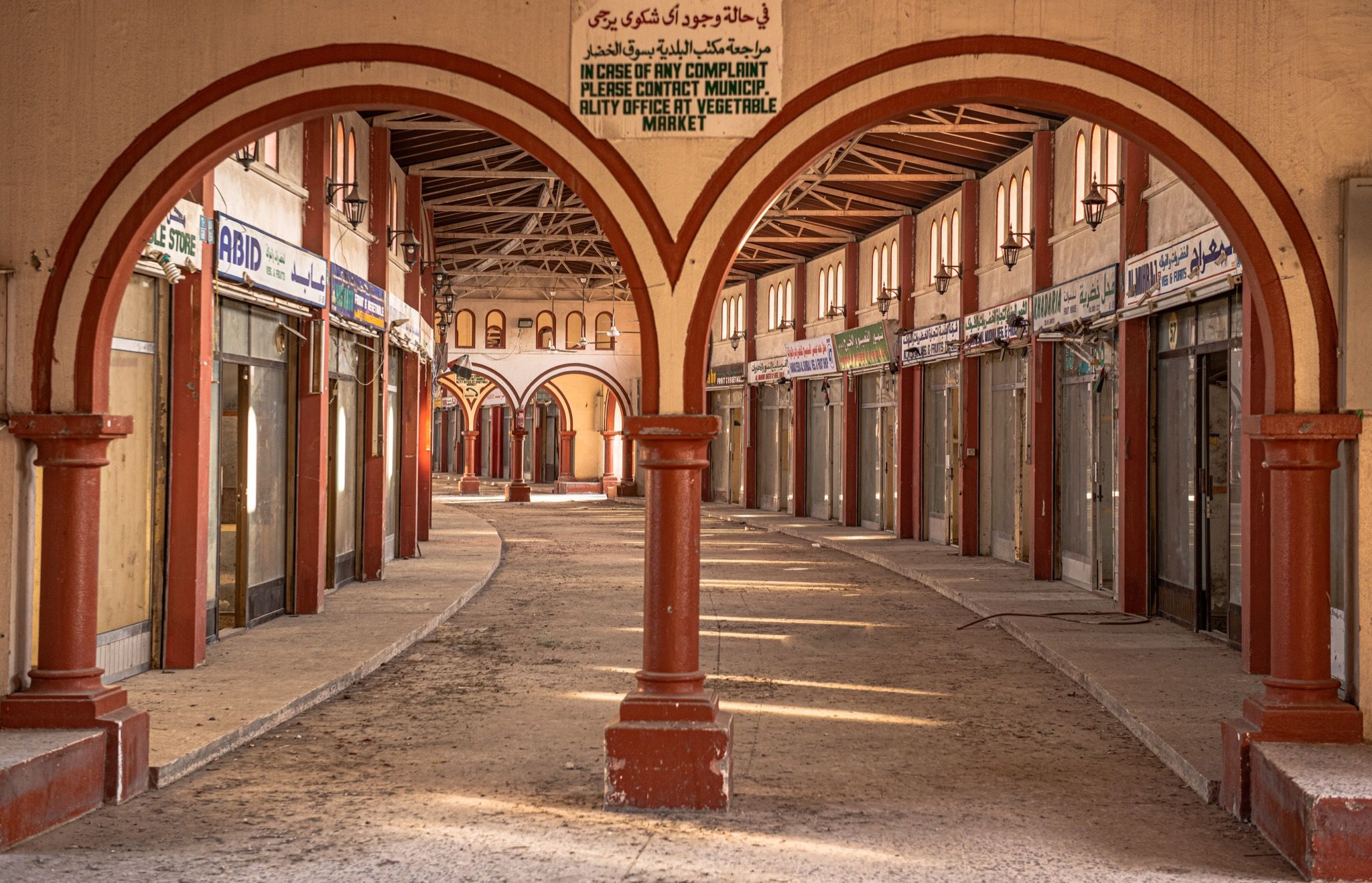
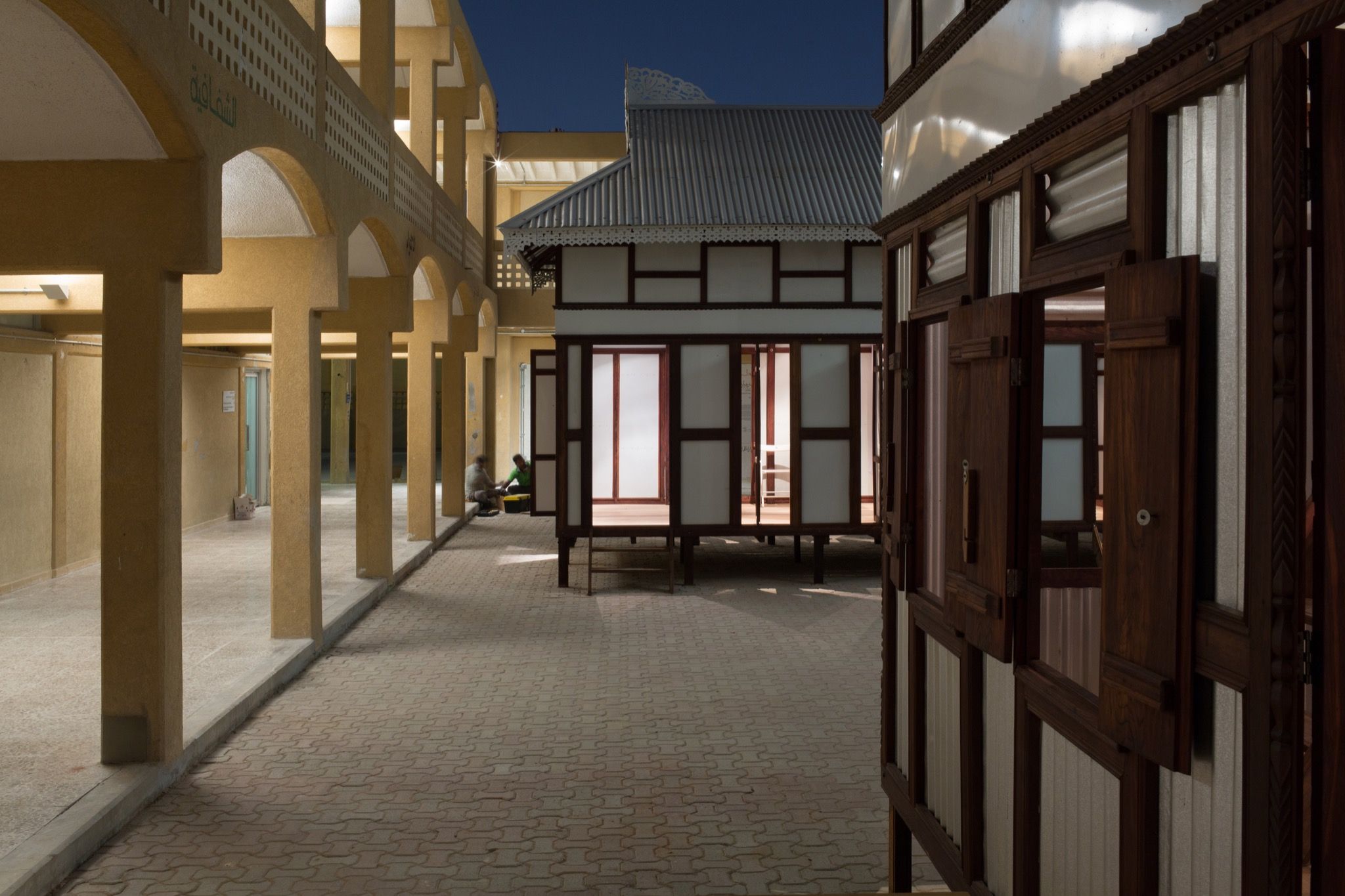
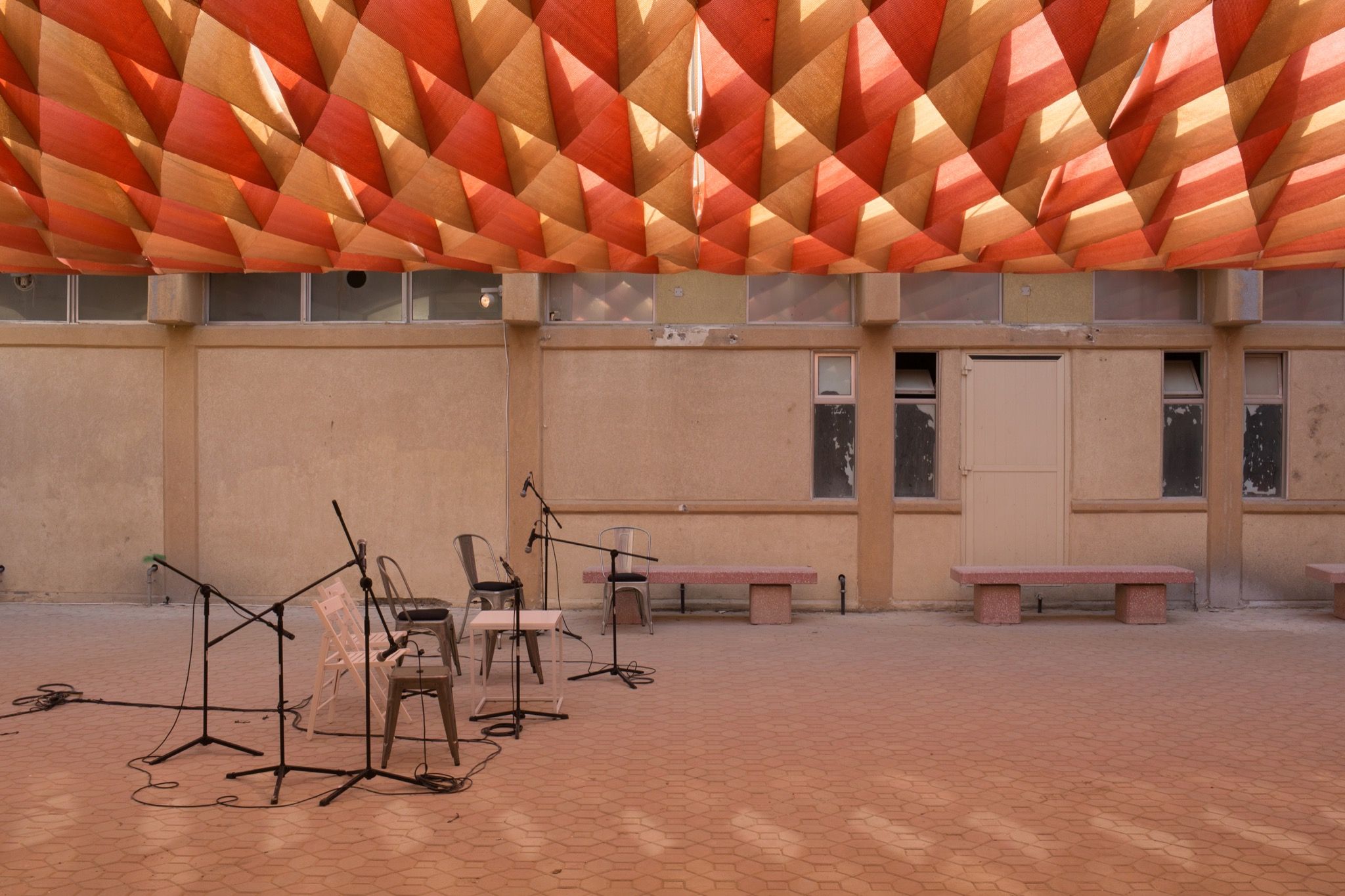
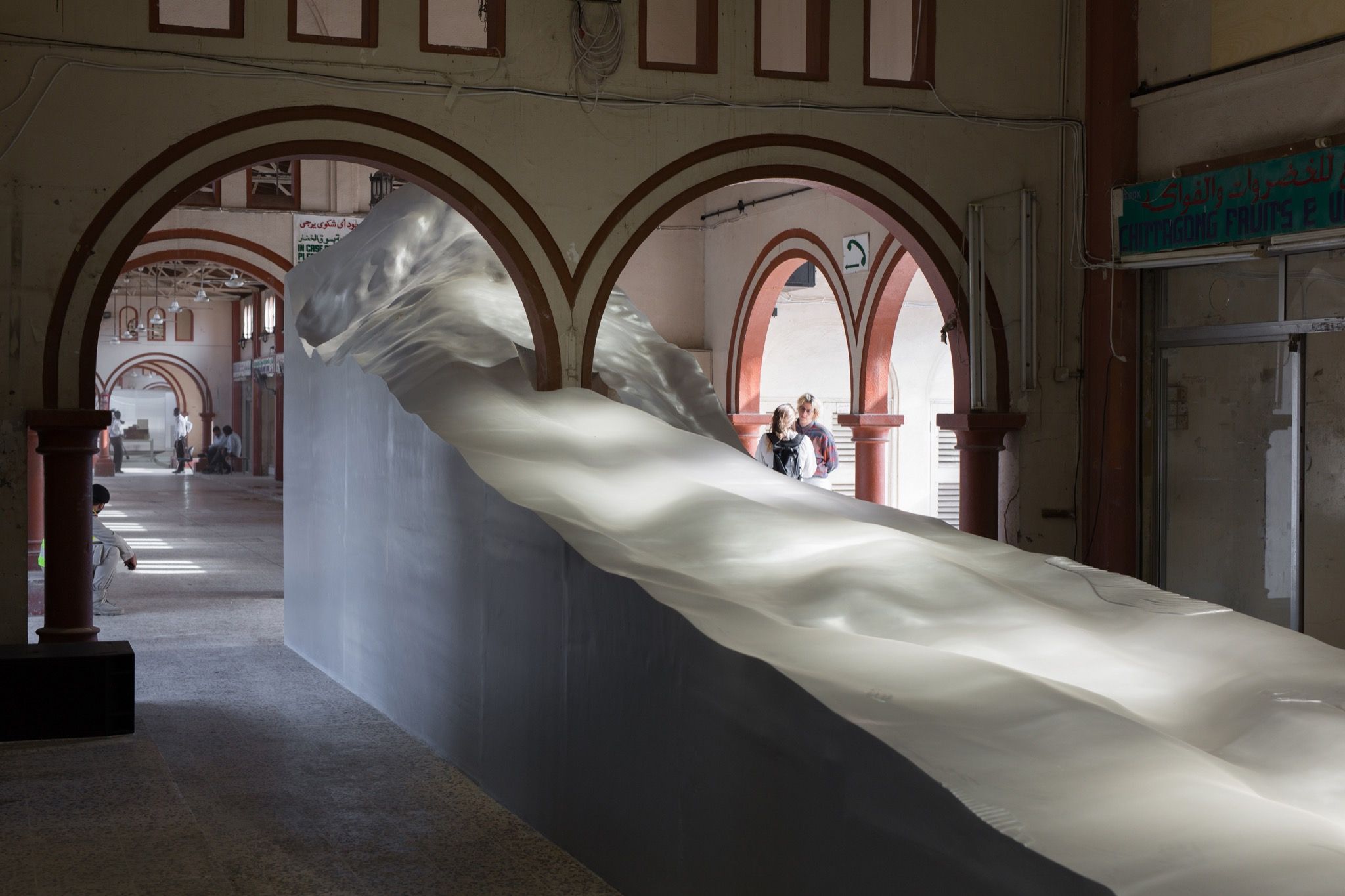
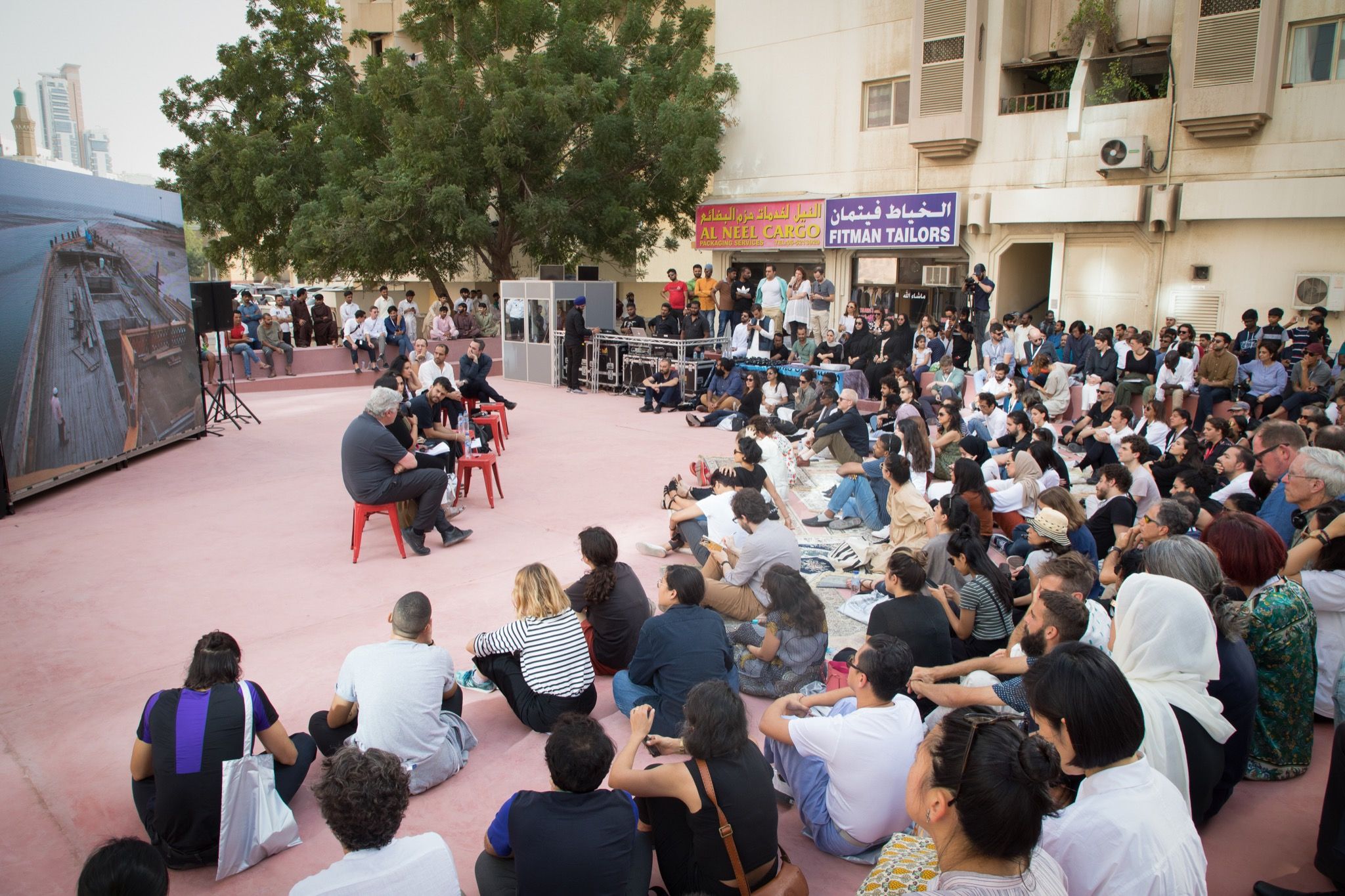
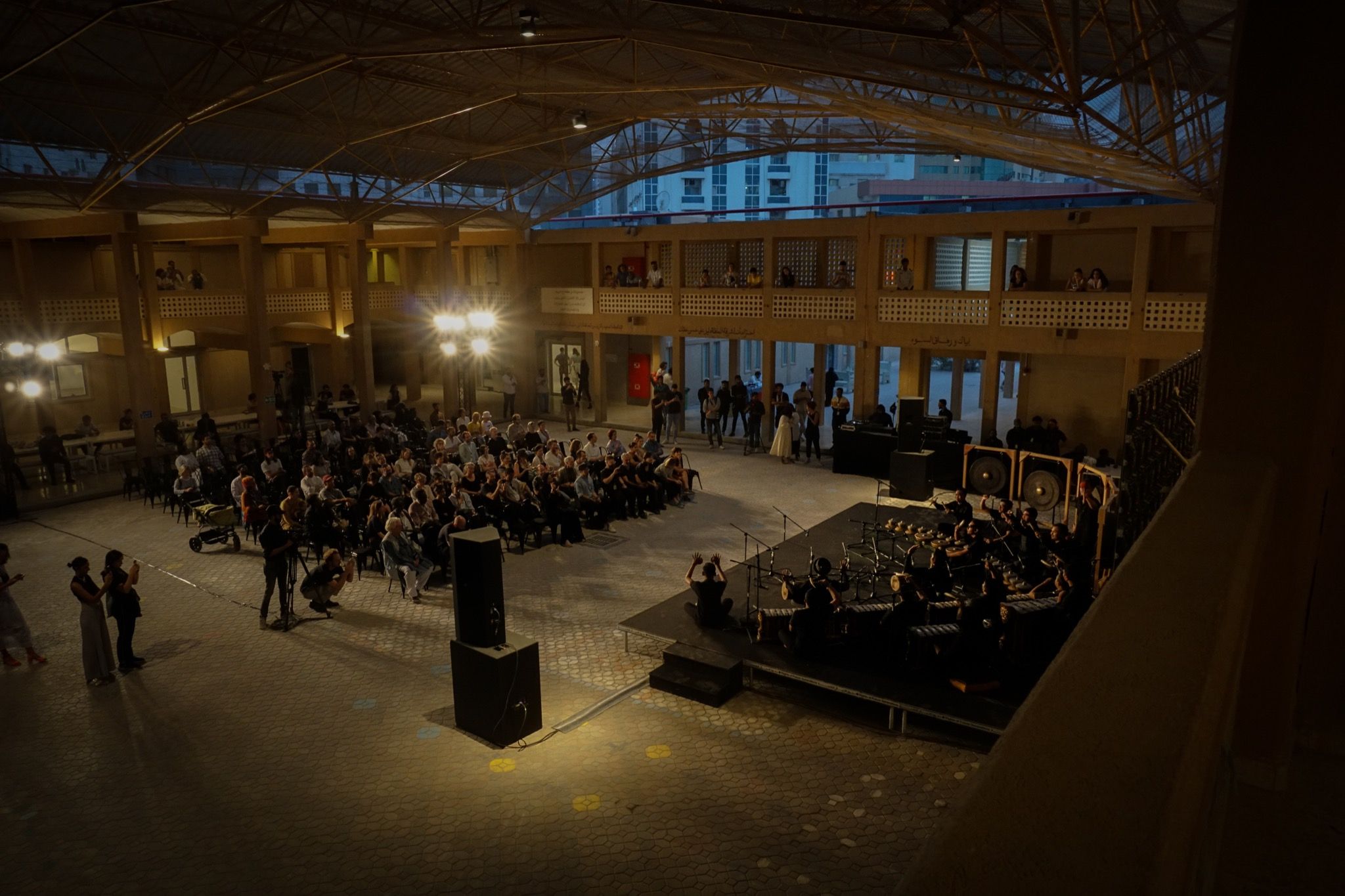
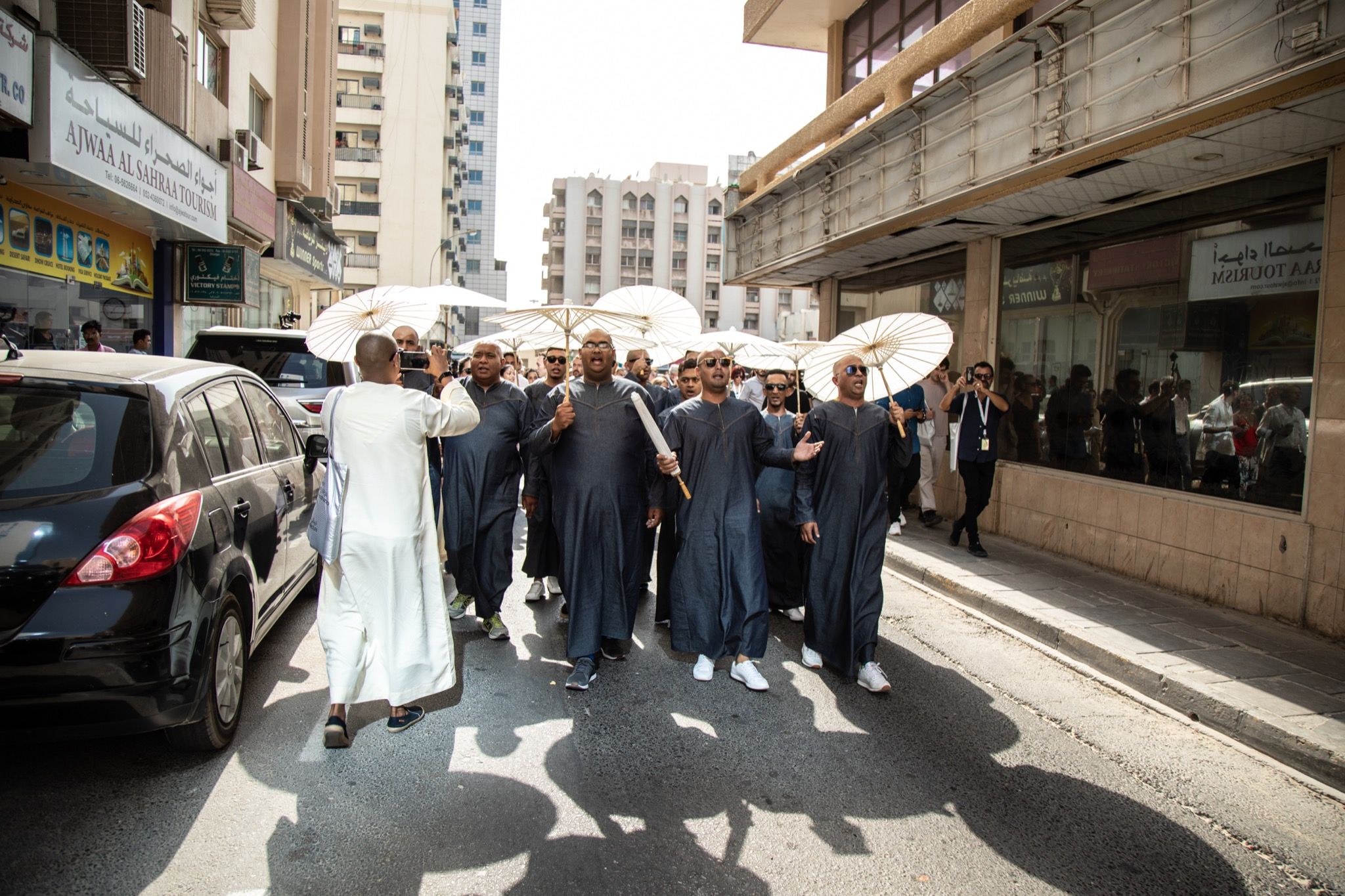
Credits
- Text: Victoria Camblin
- Interview: Nicholas Korody
